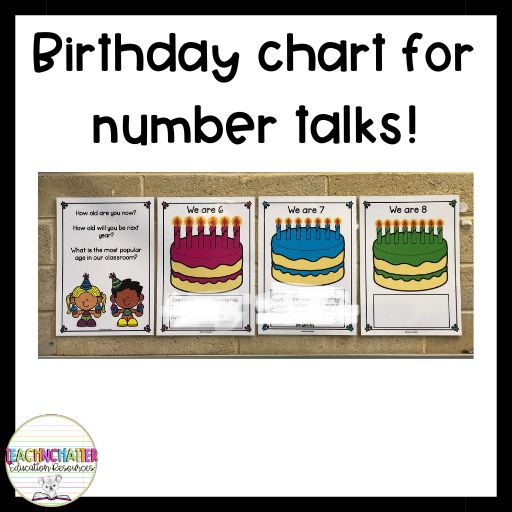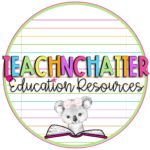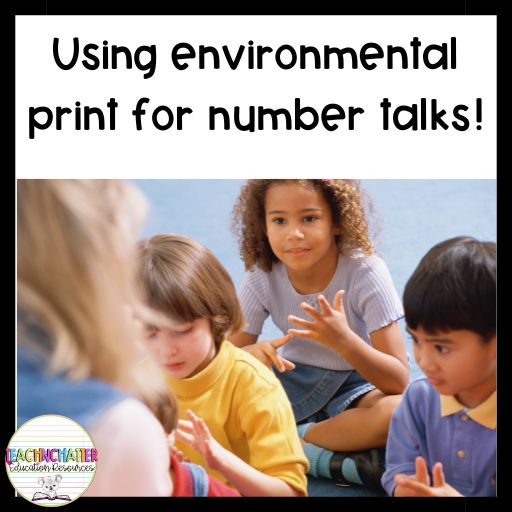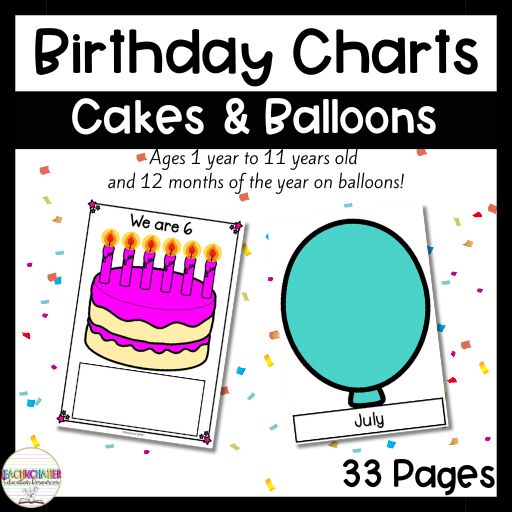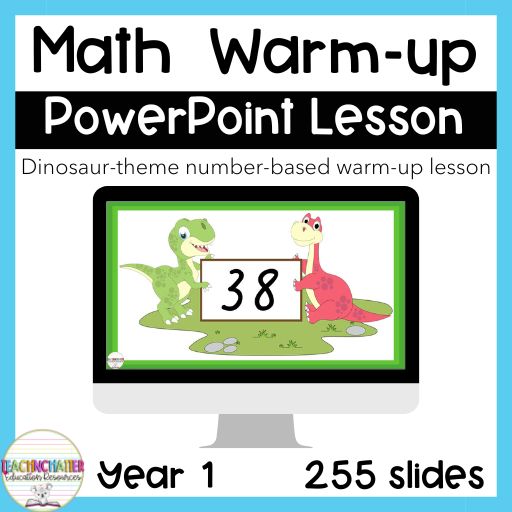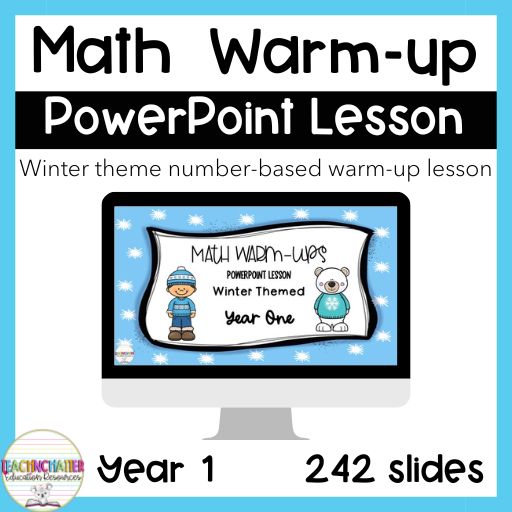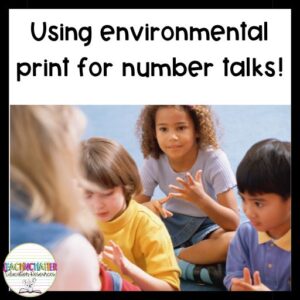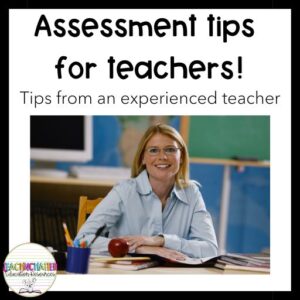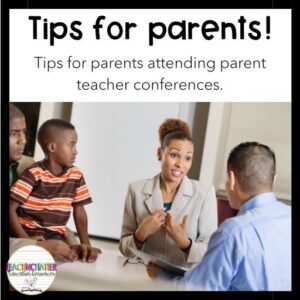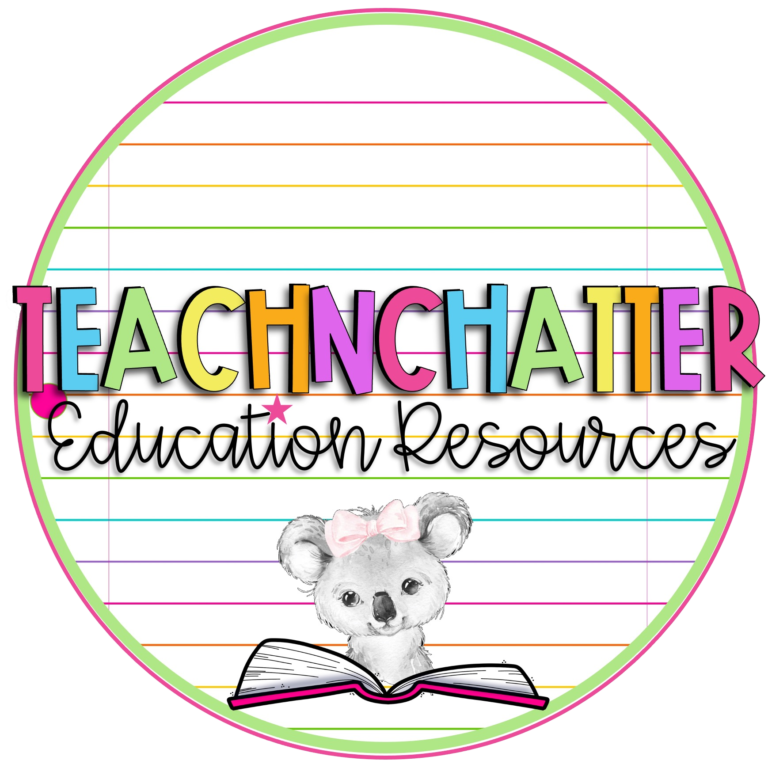Number Talks
My favourite way to engage students in number talks is by using my birthday chart. I’m sure you have heard of number talks being discussed in social media and around your school by now? Number talks are a valuable tool for building mathematical fluency and conceptual understanding in students of all ages. Here are some benefits to incorporating number talks into your daily program:
- Develops mathematical reasoning: Number talks help students develop reasoning skills and a deep understanding of mathematical concepts by encouraging them to explain and justify their thinking.
- Promotes communication and collaboration: Number talks provide opportunities for students to discuss and share their ideas with others, which can promote communication and collaboration in the classroom.
- Builds confidence: Number talks can help build students’ confidence in their math abilities by providing a low-stakes environment for exploration and experimentation.
- Enhances mental math skills: Number talks often involve mental math strategies, which can help students develop their computational fluency and mental math skills.
- Engages all students: Number talks are inclusive and can engage all students, regardless of their background or prior math experience.
Overall, number talks are a powerful tool for building mathematical fluency, reasoning, and communication skills in students. By incorporating them into your daily program, you can help your students develop a deep and lasting understanding of mathematics.
As a teacher, I love that I can gain a deeper insight into HOW the student is solving the problem (even if it looks like they are all solving the problem in the same way) as their thought processes often surprise me. When students engage in number talks, they get the opportunity to listen to the strategies that other students use to solve their problems and they can learn from this. John Hattie gives strategy monitoring an effect size of 0.58, which is considered effective. Overall, apart from being engaging and fun, number talks assist in developing the students number sense.
What is number sense?
Number sense is an essential skill that helps students make sense of numbers and use them in meaningful ways. One effective way to help students develop their number sense is by using environmental print in the classroom during number talks.
What is environmental print & why should we use it?
Environmental print refers to the print that students encounter in their daily lives, such as logos, signs, and product labels. In the classroom, environmental print includes your bulletin boards and posters. Using environmental print in the classroom can be a powerful tool to help students connect real-world situations to mathematical concepts and develop their number sense.
Here are some ways to incorporate environmental print into number talks in the classroom:
- Use packaging labels: Bring in different packaging labels from products students are familiar with, such as cereal boxes or snack bags. Ask students to identify the numbers on the label and discuss their meaning. For example, if a cereal box has a label that says “Net weight 16 oz,” students can discuss what the number 16 represents and how it relates to the weight of the cereal.
- Use signs: Display signs from around the school or community, such as speed limit signs or store signs. Ask students to identify the numbers on the signs and discuss their meaning. For example, if a speed limit sign says “30 mph,” students can discuss what the number 30 represents and why it is important to follow the speed limit.
- Use restaurant menus: Bring in menus from local restaurants and ask students to identify the prices of different items. This can help students understand the value of money and how to compare prices.
- Use sports scores: Bring in sports scores from recent games and ask students to analyse the numbers. For example, if a basketball game ended with a score of 85-78, students can discuss how many points the winning team scored and how many points the losing team scored.
- Use your class attendance roll. This has your student names on it and the dates. Mine appears on the SmartBoard so it is big enough to be seen. You can also copy an attendance chart on to A3 paper that stays visible in your class all day though. I pose challenging questions to my high achievers, such as; We have 25 children in our class but if five left and then seven walked in, how many would we have. Take some time to work it out, discuss it with your partner and we will share our responses.
How to use your birthday chart!
My favourite use of environmental print when engaging in number talks is my birthday chart. A birthday chart can be a great way to incorporate number talk activities in your classroom. Students are naturally motivated to engage in this topic. Here are some steps you can follow:
- Create a chart: Create a chart with the months of the year and the number of birthdays in each month. You can use a whiteboard or a large piece of paper for this. See the link below for a ready-made product.
- Ask questions: Ask your students questions about the chart. For example, you could ask them which month has the most birthdays or which month has the fewest birthdays. You could also ask them to compare the number of birthdays in different months.
- Make observations: Encourage your students to make observations about the chart. For example, they might notice that there are more birthdays in the summer months than in the winter months.
- Use math skills: Incorporate math skills into the activity. For example, you could ask your students to calculate the percentage of birthdays in each month or to calculate the average number of birthdays per month. My class will frequently discuss how many students are a specific age and how many people are not yet the oldest age. They will count how many months (or days) until it is their birthday. I can also pose problems and challenges depending on the mathematical abilities my students have. For example, I could say “If you are seven this year, how old will you be in five years?” Use your whiteboard to show me how you work this out. Hint: students seem to love math problems when they are all about them!
- Make connections: Help your students make connections between the chart and their own lives. For example, you could ask them to think about how many people they know with birthdays in each month.
By using a birthday chart for a number talk, you can help your students develop their math skills while also making connections to their own lives.
By using environmental print in the classroom during number talks, students can see the relevance of math in their everyday lives and develop their number sense in a meaningful way. Additionally, this approach can help students who struggle with abstract concepts to better understand mathematical concepts and build confidence in their math abilities.
So, it is great to use a PowerPoint lesson to engage students in number talks (and I do this too!), but you can also use the print around you. What do you already have in your classroom that you can use to spark conversations and number talks?
Incorporating environmental print into number talks can be a valuable tool for helping students develop their number sense. By connecting real-world situations to mathematical concepts, students can gain a deeper understanding of math and its relevance to their lives.
How else have I used number talks in my classroom? Yes, I have used PowerPoint lessons with pictures or sums to solve. One of my favourite ways to spark conversation and see what math can be “pulled” out of a picture is by having a picture stimulus on the SmartBoard (from my PowerPoint) and asking students to write their own number story about this image. For example, I may have two koalas and three wombats. Some students will come up with a simple addition sum (2+3=5). Some students will add in elements that are not shown. For example, there were twenty koalas but 18 walked away and so two were left. Later on, three wombats came to play. Altogether, there were five animals left in the bush.
Do it how you prefer. Change it up to spark interest! I like to use a combination of PowerPoint warm up slides, environmental print and sometimes the daily roll count to spark conversation.
Try it out and let me know how you go!
Kind regards, Jennifer 🙂
research article on number talks
Please note: See below the birthday age cakes we use in our class. This generates many number talks. Yes, the brick wall is not pretty, but the kiddos love their chart and having their name on it. They love talking about their age and discussing who is what age and so forth!
The math warm-up lessons linked below also have stimulus pictures to use in number talks! You can also use the subitising slides for number talks too.
